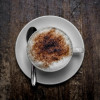3D bar codes to fight fakery
Interview with
Fakes - whether they're cancer drugs, car parts or anything else - are a big problem,  costing economies billions of pounds worldwide and potentially endangering lives. Counterfeiters are clever; they quickly work out how to get round measures that manufacturers put in place to tell apart genuine goods from knock-offs. Now, a three-dimensional 'bar code', created by engineers at the University of Bradford working with the company Sofmat, could be a new way to uniquely stamp individual pills or products. Elaine Brown was one of the team behind the new technology, which was revealed at the British Science Festival this week; Kat Arney met up with her there.
costing economies billions of pounds worldwide and potentially endangering lives. Counterfeiters are clever; they quickly work out how to get round measures that manufacturers put in place to tell apart genuine goods from knock-offs. Now, a three-dimensional 'bar code', created by engineers at the University of Bradford working with the company Sofmat, could be a new way to uniquely stamp individual pills or products. Elaine Brown was one of the team behind the new technology, which was revealed at the British Science Festival this week; Kat Arney met up with her there.
Elaine - When we think of anti-counterfeiting, a lot of the time, we think of it as being a problem for big business. But actually, it affects all of us. We want to know that when we purchase something or when we use something, then it is real and we can trust it.
Kat - What sort of things are we talking about, you know I might see someone walking around with a Prada handbag and go "Is that really real?" or are there other things as well?
Elaine - Well, that kind of thing is of course important. It's very important to the companies that make those products. For me, where I see it's a really important thing for me as an individual would be something that would have a direct effect on me such as a drug, a medicine, or something I'll put in my body like an implant, or for example, part of a car that I'm driving and I want to know that if I put a spare part in, that it's real and it's not going to fail.
Kat - Tell me about the technology that you and your colleagues and your collaborators have been developing to try and put markings on so that we know that these products are real? How does this work? What is it?
Elaine - We work on something called micro and nano technology moulding which basically means moulding really tiny things or moulding large things but with tiny features on them. So, we can put something on a part, on a moulded part that can't be seen by the naked eye. It's really tiny and we can put such detail on that we can mould such detail into that that we can tell sequentially where something has been made, where something has been manufactured, what number it was in the batch for example. So, because of that, we can use the high technology moulding equipment to produce something that can mark individual tablets for example or individual parts.
Kat - How does this actually work? What is the mark? What would it look like?
Elaine - Under the scanner, or the reader, we would be able to see a series of markings that not only had a pattern on the surface, but also, were at different depths. We can put different markings on, different barcodes on something afterwards, but it's very unusual for the barcode to be integral to the part, but also have different depths at very, very small steps so that we can read them back with high technology equipment.
Kat - Can you explain a little bit more about how this actual marking works? What does it look like at that nanolevel?
Elaine - Well, in the moulding machine, we have a mould cavity that has lots of surface features on it for whatever we're trying to make. As part of that, we can put some pins which will move. The pins that we use go into the mould and we can have an array of pins and we've used 4 up to now, but we can use more pins than that. We can set them at different heights. Those height levels are very, very tiny. We wouldn't be able to detect them by sight or by touch. We're talking about 40 to 50 microns. When you think that human hair is about 100 microns in diameter, these are very small steps. We have to be able to set those steps and we have to be able to mould the polymer to an equivalent step. That's quite difficult to do, but with expertise at Bradford, we can do that. So because we then have lots of different heights for our pins and we can increase the number of pins we have, we have millions of different combinations. It gives us a very, very large number of different markings that we can put on our pills or on our mouldings.
Kat - So, that's the marking, but what about the reading? Many of us are familiar with the supermarket scanners where you hold up the barcode and like beep, there you go. Would that be a similar kind of idea? You'd put a pill in something, it would go beep, yep that's real.
Elaine - Yes. You would put the moulded pill into a scanner. Generally, if we look at the kind of barcodes that we have in the supermarket, there are just two levels that's usually black and white lines. So, what the reader for this particular device would require and the reader that's being developed allows us to measure the depth as well as the different pattern in a 2-D way. So, that gives us the 3-D pattern.
Kat - Why is this so important to the pharmaceutical industry? I've got a packet of off-the-shelf painkillers in my handbag. I'm presuming it wouldn't really be worth marking all of those. What kind of drugs would be marked and why is that important?
Elaine - There are some very, very specialist drugs on the market. It's important that the companies that develop them know that they are not being copied and sold by counterfeiters. But it's also important to us as users of those drugs. If we added something to the drug to mark an individual drug then that would be very difficult. It would be adding something that would contaminate the drug in some way. This particular technology is so exciting because we're moulding it into the individual drug.
Kat - What's the financial scale of counterfeiting?
Elaine - We're talking a lot of money here and millions and millions of pounds. For us as a university, the financial side of course is important but it's also highly important to us that we can, as engineers protect the public, protect society from counterfeiters. It's a huge problem. It is the money, but it's also our safety.
- Previous Using balloons to see Dark Matter
- Next Introducing Homo naledi










Comments
Add a comment